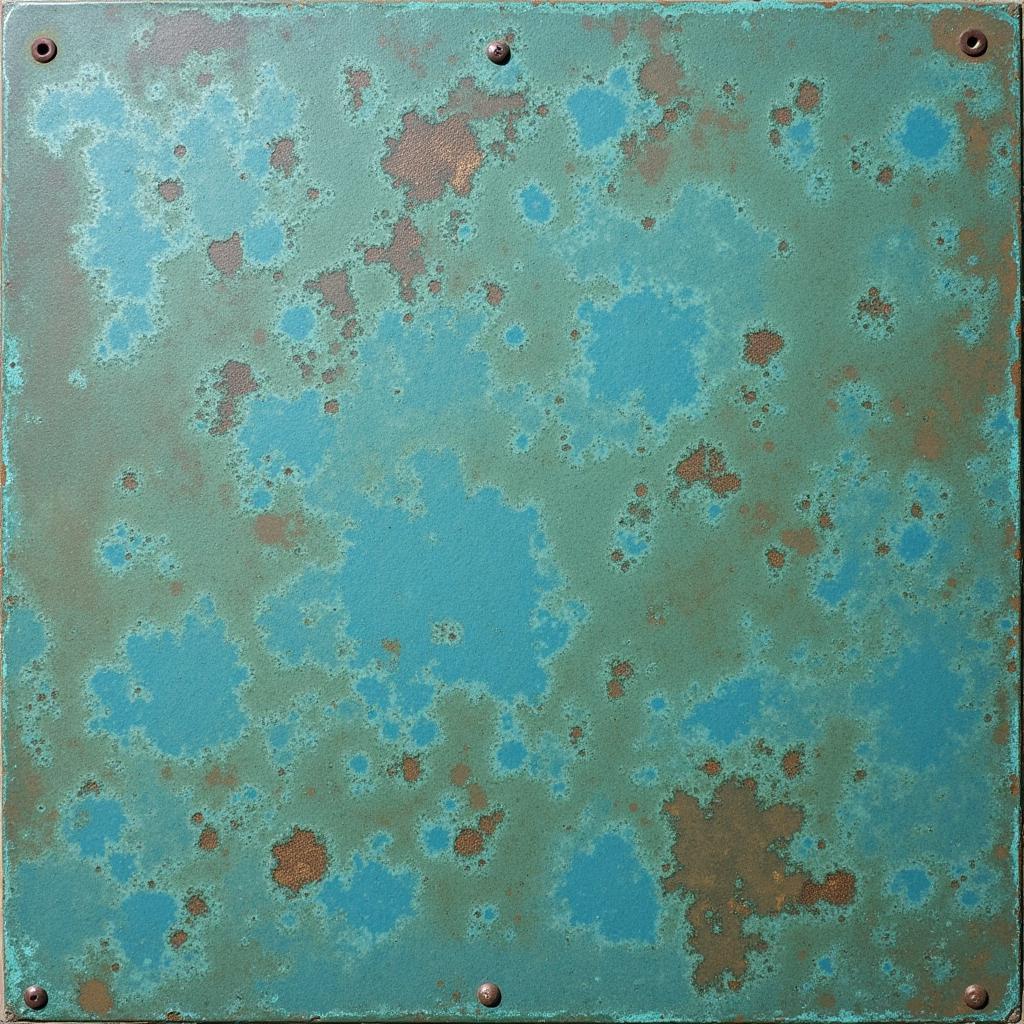Copper is a reddish-brown metal known for its warm, inviting hue. But is “copper” truly a color? While we often refer to the distinct shade of copper as a color, it’s technically more accurate to call it a material. Let’s delve deeper into the fascinating world of copper and its many shades.
Deconstructing the Shades of Copper
Although not a color in the traditional sense, copper boasts a unique spectrum of tones that evoke a range of emotions, from rustic charm to modern elegance. The most recognizable shade is a rich, reddish-brown often associated with pennies or cookware. However, copper can also exhibit hues of pink, orange, and even green, depending on its age, oxidation, and surrounding environment.
 Copper Patina
Copper Patina
The Science Behind Copper’s Colors
Copper’s characteristic color stems from its atomic structure and how it interacts with light. When light hits a copper surface, some wavelengths are absorbed, while others are reflected. The reflected wavelengths are what our eyes perceive as color. The specific reddish-brown hue we associate with copper is due to the way its electrons absorb and re-emit light in the red-orange part of the spectrum.
Copper Through the Ages: From Shiny to Verdigris
One of the most captivating aspects of copper is its ability to transform over time. A freshly polished copper surface shines with a bright, pinkish-orange glow. However, as copper is exposed to air and moisture, it undergoes a chemical reaction known as oxidation. This process forms a protective layer called patina on the surface, causing the color to evolve.
Have you ever noticed the green-blue hue on old copper roofs or statues? That’s verdigris, a type of patina formed through prolonged exposure to the elements. Verdigris, with its distinctive blue-green color, adds a sense of history and character to copper, making it a favorite in architectural designs and historical artifacts.
“The beauty of copper lies in its ability to tell a story through its changing colors. From the fiery glow of a new penny to the stately verdigris of a centuries-old statue, each shade represents a chapter in the material’s life,” says renowned color consultant, Emily Carter.
Copper in Art and Design: A Timeless Inspiration
Copper’s versatility and captivating hues have inspired artists and designers for centuries. From ancient jewelry and sculptures to modern architecture and interior design, copper’s warm, earthy tones add a touch of elegance and sophistication. Whether used as a primary material or accent pieces, copper effortlessly blends with various styles, creating a visually striking contrast or a harmonious flow.
Want to learn more about how to incorporate copper accents into your home décor? Check out our article on what color siding goes with a copper roof.
Copper: A Color Palette Beyond the Metal
The influence of copper extends far beyond the physical material. Its various shades have inspired a rich color palette that translates beautifully into paints, fabrics, and decorative elements. From deep, earthy browns like “burnt copper” to shimmering metallic finishes, the “copper color family” offers a range of options for adding warmth, depth, and a touch of vintage charm to any space.
Conclusion
So, while technically not a color in the purest sense, copper’s captivating hues and transformative nature continue to inspire and intrigue. Whether you’re drawn to the shiny, reddish-brown of a new penny or the weathered, green patina of an antique, there’s no denying the unique beauty and enduring appeal of copper.
FAQs
1. Does copper always turn green?
While copper is known for developing a green patina (verdigris) over time, this process depends on environmental factors. In dry climates, copper may develop a reddish-brown patina instead.
2. Can I prevent copper from changing color?
Applying a clear protective coating to copper surfaces can slow down the oxidation process and help maintain its original color for a longer period.
3. What colors go well with copper accents in interior design?
Copper pairs beautifully with neutral tones like white, gray, and beige. It also complements rich jewel tones like emerald green, sapphire blue, and ruby red.
Need help choosing the perfect color palette for your next project? Contact us! Call us at 0373298888, email us at [email protected], or visit our showroom at 86 Cầu Giấy, Hanoi. Our team is available 24/7 to assist you.
